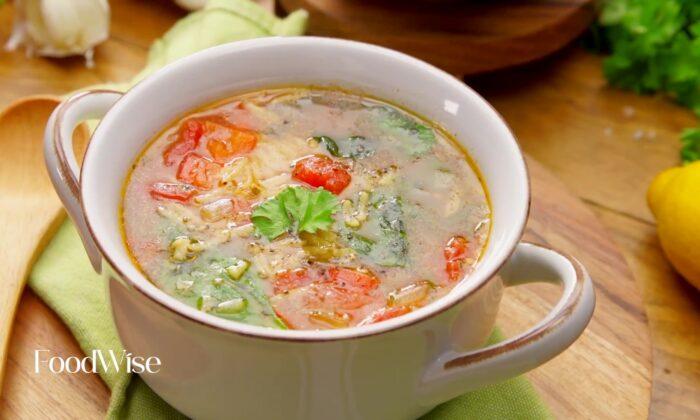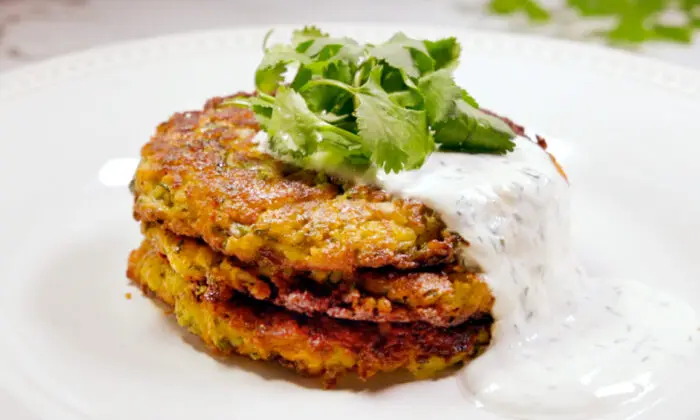A lot of headlines published lately refer to food in the fight against diseases, and its impact on cancer, the second leading cause of death in the U.S. The TED talk “Can We Eat to Starve Cancer?” by Dr. William Li from 2010, attracts views even today. What is this medical revolution that Dr. Li talks about and how can we determine the role of diet in the battle against cancer?
There is scientific evidence of how some food impacts cancer cells. Dr. Li, author of the book “Eat to Beat Disease,” explains the role of angiogenesis in cancer cells and what kinds of food can prevent its development. Dr. Li’s paradigm for using food as a “weapon” in this fight has appeared in over 100 scientific publications in leading journals such as The Lancet and The New England Journal of Medicine.
The American Cancer Society, for example, recommends more vegetables and fruits, whole grains, and less red meat or other Western diet food, mainly practiced in the U.S.
This article explains anti-angiogenesis and other anticancer effects that some foods have on cancer cells and how that could help in risk reduction.
Angiogenesis and the Growth of Cancer Cells
The body’s cells need oxygen and nutrients for their function and growth, and blood vessels deliver those necessary supplies to cells via capillaries. If the body needs more vessels, then new blood vessels will form in a process called angiogenesis. This process is controlled by stimulants and inhibitors; when chemical signals are sent, angiogenesis is activated. This activation happens during growth, pregnancy, and after injury.
On some occasions, cells begin to grow abnormally and form tumor cells. Solid tumors, like normal cells, need oxygen and nutrition to grow and multiply. If tumor cells succeed in sending a signal to the body for angiogenesis, the process is activated and new blood vessels are built to feed the tumor cells. This helps tumor cells to grow, mutate, invade local tissues, and through circulation, metastasize.
Cancer Defense Strategy Based on Angiogenesis
Science has been devoted to finding more efficient cancer treatment options, and interruption of the tumor tissue feed is one of those. This was a step forward in improving pharmacological treatments and angiogenesis inhibitors. Unlike chemotherapy which targets the growth and division of cancer cells while also damaging healthy cells, anti-angiogenic therapies inhibit angiogenesis and limit the feeding of cancer cells.
Even though angiogenesis inhibitors have improved treatment outcomes, life expectancy, and reduced side effects, cancer is still frequently diagnosed. In 2022, over 1.9 million new cases are predicted to occur in the U.S. This threat urgently demands the need for additional, effective solutions.
Angiogenesis interruption can be an effective defense mechanism, and feeding tumor cells can be limited in two ways: either by limiting the nutrient intake in our body by fasting, or by influencing the formation of new blood vessels for the tumor. The latter method was the objective of many studies that evaluated different foods and their effects on cancer cells and is the basis of the Angiogenesis Foundation’s aim to improve global health.
Foods Shown to Have Anticancer Effects
Various foods have been used for their therapeutic effect on some diseases for thousands of years, but today, they draw attention because of their potential anticancer effect. It is of great importance because the U.S. is the fourth leading country worldwide for new cancer cases every year.
Country development and early diagnosis are the main reasons that the U.S. are ahead of European and Middle Eastern countries; however, dietary patterns may also play an important role. Many food and medicinal plants studied have been shown to inhibit carcinogenesis processes in many ways, including anti-angiogenesis.
Keep reading to learn more about it.
Green Tea Shows Anticancer Effects on Different Cancers
The famous beverage green tea, popular in Japan and China, has been used for centuries for medical purposes. Epigallocatechin-3-gallate (EGCG) is the most studied active compound in green tea that has antioxidant, anti-inflammatory, and anticancer effects.
The study review published in the medical journal Molecules in 2020, summarizes the EGCG effects in different cancer cells. EGCG suppresses the process of angiogenesis in tumors, inhibits proliferation (increase in the number of cells), and prompts apoptosis (cell death) of cancer cells, but much less of that to normal cells. That’s why the cell growth of human lung cancer, breast cancer, various colon cancers, and ovarian cancer can be decreased.
EGCG in combination with some anticancer drugs can achieve better clinical results in cervical cancer and helps 5-fluorouracil’s resistance to reverse in gastric cancer.
Despite broad evidence in inhibition and cancer prevention, stronger data on EGCG clinical outcomes are necessary, due to its low bioavailability, fast metabolism, and elimination.
Soybean, a Promising Chemopreventive
Soybean, Glycine max, is the world’s major produced and consumed oilseed, where the oil is separated from protein and fiber. Among many healthy ingredients, soybean contains high amounts of genistein. This isoflavonoid is responsible for the anti-angiogenesis effect, due to interrupting the activation process of cells in the inside lining of blood vessels.
Genistein is associated with preventive effects on breast cancer development. The review of preclinical and clinical studies, published a year ago, showed the anti-breast cancer effects of genistein through different pathways, including angiogenesis prevention, apoptosis, and anti-proliferation. In experiments in vivo, genistein significantly induces a reduction of microvessel density and suppresses tumor growth.
While waiting for additional clinical data for a full understanding of its mechanism of action and clinical outcome, experimental data suggest the benefit of its chemopreventive effect.
Curcumin, the Multi-Anti Agent
The widely used curry powder contains curcumin, the active compound in turmeric, from the East Indian Plant Curcuma longa. Besides its tasty, unique flavor, curcumin is known as a “multi-anti” agent, beneficial for many health conditions, such as improving memory in people with Alzheimer’s.
The available early-phase trials signal curcumin’s possible anticancer effects. Patients with lesions in the colon lining and rectum who received curcumin had decreased early changes in the lining, warning signs of polyps and cancer. Some studies in patients with breast, prostate, pancreatic, and other cancers showed improvement when curcumin was used with traditional cancer treatment.
Filled with health-boosting antioxidants and anti-inflammatory powers, this turmeric golden milk recipe includes cinnamon and ginger—both of which have impressive antioxidant properties as well.The turmeric plant has been traditionally used in Asian medicine for the treatment of some medical conditions. However, due to a lack of evidence, curcumin is not approved by the FDA for cancer or as a treatment for other medical conditions.
Potential Cancer Treatment—Artemisinin
Interesting findings about artemisinin became available after 2015 when it garnered the Nobel Prize for its discovery. Artemisinin is a compound derived from the annual wormwood Artemisia annua L. and is traditionally used in Chinese medicine for the treatment of malaria, fever, and chills.
Anticancer experimental activities of artemisinin and its derivatives (ART) are summarized in scientific research from the last decade. It was found that ART inhibits cell proliferation, migration, and invasion in human breast cancer, and induces cell apoptosis in hamster kidney adenocarcinoma.

ART induces autophagy-dependent cell death, as in human cervical cancer cells, and inhibits metastasis as in non-small-cell lung carcinoma, and ovarian and lung cancer cells.
These findings, together with iron-dependent cell death driven by ART, have the potential to be used in future cancer treatment strategies.
Anti-angiogenic Effect of Berries and Red Grapes
Berries are one of the healthiest fruits due to being low in calories, and rich in fiber, antioxidants, and vitamin C. Aside from reducing blood pressure, cholesterol, and stress, berries have shown anticancer effects, thanks to resveratrol. This polyphenol is also present in red grapes, peanuts, and red wine.
Studies show that resveratrol targets different molecules in the human body and blocks carcinogen activation while also suppressing tumor initiation, promotion, and progression. Results from another study suggest that resveratrol expresses an anti-angiogenic effect based on inhibition of the tube’s formation and endothelial cell proliferation.
While waiting for more safety data (high doses could stop blood from clotting) and disease and dose recommendations for resveratrol supplements, fresh berries could be a safe and healthy source of resveratrol.
Cruciferous Vegetables
Broccoli, cauliflower, kale, arugula, and cabbage, among others, make up a group of vegetables commonly known as cruciferous vegetables. Although each may be different in color, shape, or size, they are equally rich in minerals, vitamins C, E, K, and folate.
Thanks to the presence of phytonutrients, cruciferous vegetables show anti-inflammatory effects and could reduce the risk of cancer development. Some case-control studies have found that eating a greater amount of these vegetables lowers the risk of prostate cancer, and is beneficial for women in reducing colon and lung cancer.
This cauliflower steak with turmeric spiced sauce is a great way to add more cruciferous vegetables to your diet.Other studies reported little or no association, so the anticancer effect must still be evaluated. Despite the current modest evidence in cancer prevention, cruciferous vegetables are recommended vegetables by the federal government’s Dietary Guidelines for Americans for daily consumption.
Tomato and its Role in Prostate Cancer
Tomatoes, pink grapefruits, and watermelons share a common feature: the carotenoid, lycopene. Since 2003 it has been known that high consumption of tomato and tomato-based products are associated with a 10 to 20 percent risk reduction of prostate cancer (PC). Eleven years later, another study concluded that a high dietary intake of lycopene can reduce the risk of lethal PC while also lowering angiogenesis in tumor cells.The epidemiological studies suggest the potential benefit of lycopene providing a 35 percent risk reduction of total prostate cancer and a 50 percent reduction of advanced prostate cancer.
In the same review, dietary case-control studies do not support these findings, probably because of the low lycopene level.
In addition to potential risk reduction benefits, the findings of a study published in 2020 suggest that lycopene and its derivatives can potentially be used in prostate cancer therapy. Further lycopene research will be focused on different dosage regimens.
The Effects of Garlic on Cancer-related Conditions
Garlic is a widely used spice that contains allicin. When we consume fresh garlic, allicin breaks down into reactive sulfur-containing compounds with antibacterial potential. The benefits of garlic have been known since World War I when garlic extract was used for antibacterial and antiseptic therapy.
Moreover, allicin shows seven effects on cellular functions that are associated with cancer conditions. The finding of a recent study suggests that allicin promotes cell death, reduces cell proliferation, and increases oxidative stress in various tumor cell lines. There is also evidence that allyl compounds may have preventive effects against cancer.
Some of allicin’s characteristics, such as its sensitivity to heat and light and easy metabolism, can obstruct its clinical application; therefore, more research is needed to overcome these therapeutic limitations.
Medicinal Mushrooms, Beneficial in Prevention and Treatment
Mushrooms are tasty, healthy, and rich in protein, fiber, vitamins, and minerals. Many researchers suggest that medicinal mushrooms could be beneficial for cancer prevention.
Results from the recent systematic review and meta-analysis suggest that a higher intake of mushrooms is associated with a lower risk of total cancer. In Japan, the active compound in turkey tail mushrooms, polysaccharide-K, is approved for cancer treatment.
These findings provide us with another reason to include mushrooms as part of a healthy diet.
Certain Foods Can Increase Cancer Risk
While many foods and herbs are beneficial for our health and show anticancer effects, some are not healthy and can even increase the risk of some cancers:
- Fried food–Although easy and fast to prepare, when food is fried at a high temperature in canola, corn, or soybean oil, these oils are easily oxidized and generate carcinogenic compounds. Other carcinogens are formed from the muscles of meat when deep frying. Regular consumption of fried food increases the risk of prostate cancer.
- Processed and red meat–Processed meat, usually red meat, is preserved with salting, smoking, curing, or drying. Sausages, hot dogs, ham, salami, and smoked or dried meat are some of the products from this group. Eating processed and red meat significantly increases the risk of colon, rectal, and breast cancer.
- Sugar and refined carbohydrates–Processed food and soda have added sugars that are a risk factor for obesity; therefore, their intake should be limited in favor of fruit sugar. If we know that obesity is a risk factor for many types of cancer, then we should try avoiding foods containing “added sugars.”
- Alcohol–Consuming more than one glass of red wine or a small beer daily is not recommended as it can increase the risk for several types of cancers.
Reduction of Cancer Is in Our Hands Too
While many diseases can be treated or controlled with pharmaceuticals, treating cancer is more difficult. Quitting smoking (a common risk factor for lung cancer) can help but there’s even more that we can do. Smoking, obesity, alcohol, poor nutrition, and physical inactivity are responsible for 18 percent of all diagnosed cancers in the U.S.
This is a strong reason to make some lifestyle changes today. While science is occupied with developing new treatments and vaccines, we can do a lot to reduce those new cases and deaths. Healthy food plays an important role. However, if you are on any existing medications or undergoing cancer treatment, it would be best to consult with doctors and nutritionists before making any big lifestyle changes.
Not everyone can afford expensive cancer treatment without a guarantee of a positive outcome, but most of us can afford a healthier diet and life.




